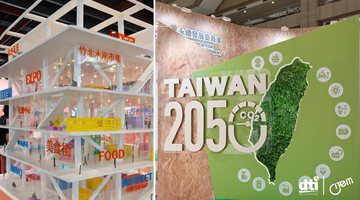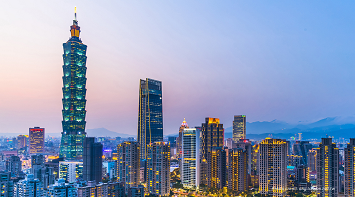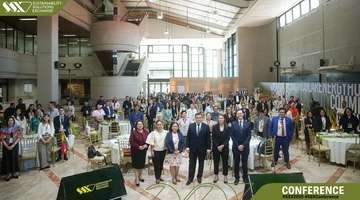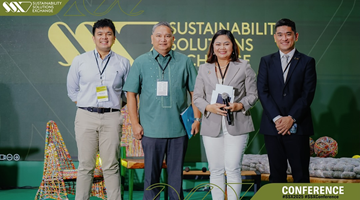POSTED Mar 22, 2022 - 05:25 PM
It’s not enough to just say “sustainable”—know the real deal behind these green keywords
Sustainability and going green should be more than just marketing buzzwords. Here’s what the terms should really mean for your business
Originally published in https://nolisoli.ph/96707/sustainability-terms-greenwashing-buzzwords/
Original Text by Christian San Jose
Additional text by Pauline Miranda
Other than the “No Plastic” movement, the rise in popularity of sustainable practices in recent years is best encapsulated in the terms it catapulted to the mainstream. “Sustainability” itself is an all-encompassing term that over time has been co-opted by big corporations and companies for their corporate social responsibility projects, ultimately eroding its meaning.
In recent memory, you may have encountered “carbon offsetting” or “carbon footprint,” a term that oil companies employed to shift responsibility to consumers.
“British Petroleum, the second-largest non-state-owned oil company in the world, with 18,700 gas and service stations worldwide, hired the public relations professionals Ogilvy & Mather to promote the slant that climate change is not the fault of an oil giant, but that of individuals,” reads an in-depth report by Mashable on this supposedly deceptive public relations campaign.
Those who genuinely want to effect change have come up with quantifiable terms to combat this type of campaign so that those who contribute to carbon emissions the most (the ultra-rich, multinational corporations, and even entire nations) are held accountable.
But more often than not these new terms alienate or even confuse people, especially when brands use them for their own marketing ploys to “greenwash” or “wokewash” their dubious operations (a.k.a., just providing an image of social awareness and responsibility for the purpose of marketing and profit, without actual substance or work to stand up for it).
To help you sift through what’s gimmick and what’s real, here is a short glossary of sustainability terms you should know, so you won’t fall prey to greenwashing.
Biodegradable
One of the often misused terms by brands looking to sell you supposedly eco-friendly alternatives, “biodegradable” is usually confused with degradable and compostable. It is defined in the scientific community as “the capacity for biological degradation of organic materials by living organisms down to the base substances such as water, carbon dioxide, methane, basic elements, and biomass.”
What manufacturers fail to tell you about their “biodegradable” products, especially plastic, is that even if microorganisms were to break them down, there remains microscopic remnants that prove to be even more problematic: microplastics. Learn about that one, too.
Carbon neutrality
Also known as net zero carbon emissions, the term simply means every ton of anthropogenic (human-caused or -influenced) carbon dioxide emitted is compensated with an equivalent amount of carbon dioxide removed.
Carbon sequestration
The United Nations glossary of climate change acronyms and terms defines this as the process of removing carbon from the atmosphere and depositing it in a reservoir. Regenerative farmer, fashion designer, and holistic lifestyle educator Hindy Weber made a case for sequestration through soil via forests last year. “Healthy soil sequesters excess carbon. We need biodiverse forests, community gardens, toxin-free, and no-till farmlands to do this right now.”
Other than the soil, the Ecological Society of America lists oceans and geologic formations as possible carbon sinks.
Circular economy
In a nutshell, this concept means using resources more efficiently and for as long as possible—a reaction to linear economy (make, use, dispose). This not only entails giving things a second life but also encourages manufacturers to make products that are durable—not just in a way that plastic stays on Earth even beyond its functional lifespan. On a consumer level, that can also mean opting for ethically-sourced secondhand products like clothes or even electronics instead of buying new ones.
According to the World Economic Forum, circular economy “replaces the end-of-life concept with restoration, shifts towards the use of renewable energy, eliminates the use of toxic chemicals, which impair reuse and return to the biosphere, and aims for the elimination of waste through the superior design of materials, products, systems and business models.”
See also: Upcyling
Climate justice
Not everyone experiences the adverse effects of climate change the same way. What’s worse is, it disproportionately affects those in low-income communities, people of color, indigenous people, people with disabilities, older or very young people, and women, who are also systematically more vulnerable.
Yale Climate Connection, a nonpartisan multimedia service that aims to enlighten people about climate change, says climate justice’s ultimate goal is to “have these inequities addressed head-on through long-term mitigation and adaptation strategies.”
ESG Framework
As you and your business delve deeper into a sustainable model, you may encounter the term “ESG framework.” This stands for having an environmental, social, and governance plan for your business.
The environmental aspect or criteria of the framework takes into consideration the environmental effects the company makes. How much energy does it take in? How much waste does it produce? How much resources are needed for production and operations? What are the consequences of the business processes for living beings? This also covers the issues of a company’s carbon emissions and its contributions to climate change.
Meanwhile, the social criteria focuses on people—the relationships the company has, the reputation it has among people, groups, institutions, and communities where business processes take place. The social criteria of the ESG framework covers issues such as labor, diversity, and inclusiveness.
Lastly, the governance criteria covers how the company operates. That is, the system, practices, procedures that are used and adapted within the business as it makes decisions, complies with the law, and addresses external stakeholders.
Ethical, ethics (in sustainability)
Ethically produced and ethically sourced are also some considerations consumers now make when choosing products, especially those that make a sustainability claim. Being ethical in the field of sustainability refers to how the production of the good or service takes into account all voices that may be involved.
Ethics in sustainability applies to all three pillars. Social ethics focuses on matters of equity, justice, inclusivity, and equality. Economic ethics meanwhile focuses on whether a product was made in an environment that practices fair wages and working conditions, and if the process did or did not involve exploitation of resources. Lastly, environmental ethics covers actions done to nature—whether resources and the environment through air and water are kept clean, and if biodiversity is preserved.
Organic
Products that want to be seen as healthy or sustainable are often branded as organic. However, it’s not that easy to just slap on a legitimate “organic” label on a product. There are guidelines and requirements that need to be met in order to obtain this certification.
According to the United States Department of Agriculture (USDA), among the factors considered for food to be labelled organically grown and processed are soil quality, animal raising practices, pest and weed control, and use of additives. “Organic producers rely on natural substances and physical, mechanical, or biologically based farming methods to the fullest extent possible,” USDA says.
Plant-based
A lot of studies have already linked our food systems to climate change, which also suggests that eating less or no meat at all may be the way to go if we are truly to reduce our carbon emissions.
One of the innovations that has been picking up steam in recent years are plant-based meats made from plant tissue or fungi as well as plant-based dairy alternatives.
Regenerative farming
This concept was coined in the 1980s and gained new momentum in 2017. It’s an ecological approach to farming that enables natural systems such as lands to be renewed and to renew themselves (since industrial farming has messed up most soil). It’s a way of farming that doesn’t harm the environment and that cares for the future—it regenerates and strengthens soil, increases biodiversity, improves water cycles, and generally enhances ecosystem services.
You may also occasionally read this term from fashion brands to refer to the way they procure cotton or other materials.
“As brands look to demonstrate their environmental commitments without relying too heavily on the word ‘sustainable,’ which has become so diluted from overuse that its meaning is vague at best, ‘regenerative’ is becoming an increasingly popular label for brands looking to position themselves on the cutting edge,” writes Fashionista’s senior sustainability reporter Whitney Bauck.
Zero-waste
“The conservation of all resources by means of responsible production, consumption, reuse, and recovery of products, packaging, and materials without burning and with no discharges to land, water or air that threaten the environment or human health.” This is how environmental professionals at the Zero Waste International Alliance define “zero-waste.”
At the business level, many local enterprises use this term to describe their approach to retail that does not involve packaging, and where customers can refill their own containers with products they need.
***
Aside from a deeper understanding of sustainability and its facets, it’s also important to have concrete strategies and actions to ensure that these sustainability terms become more than just marketing buzzwords.
Integrating the concepts of sustainability into the core of the business model is becoming increasingly widespread among brands and companies. One step is to ensure that the products and services offered also carry the right certifications. Connecting and collaborating with other like-valued businesses also helps in strengthening not just each brand’s sustainability objectives, but the overall green outcome as well. The Sustainability Solutions Exchange is one platform in which brands and businesses can make this possible.
Read more

Learning the curve of sustainability: CITEM explores Taiwan’s SDG-driven industries
CITEM tracks sustainable practices in Taiwan’s transformative industries, and gets a glimpse of a... Learn More

CITEM Market Sensing Mission to Taiwan to strengthen PH SDG competency
Making serious strides toward strengthening the country’s sustainability footprint, CITEM travels to... Learn More

EU, PH push for green solutions in food industry at Sustainability Solutions Exchange 2025
Aiming to develop a sustainable Philippine food industry, the European Union (EU) and the Department... Learn More

SSX Conference yields strategies for circular PH food industry
Transformative ideas took root at the Sustainability Solutions Exchange (SSX) Conference, where entr... Learn More
